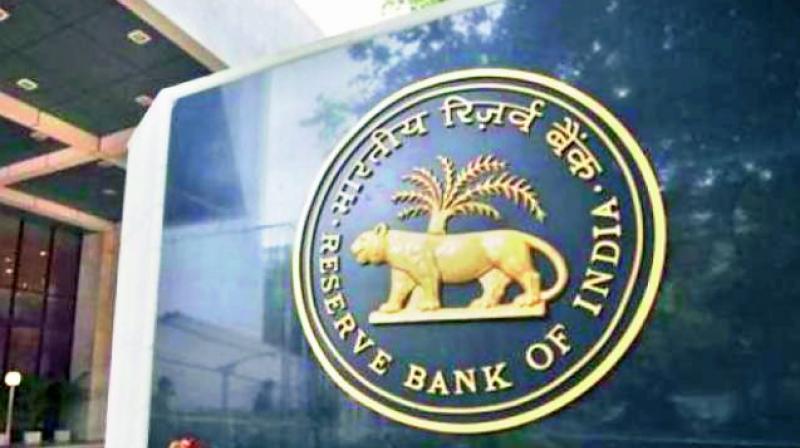Banks unwilling to reduce loan rate despite RBI's call

Mumbai: Your home loan interest rates are unlikely to fall anytime soon despite the central bank reducing its benchmark policy repo rate earlier this month. At a meeting called by the Reserve Bank of India (RBI) governor Shaktikanta Das on Thursday to persuade banks to pass on the benefit of its policy rate cut to borrowers, banks remained non-committal.
According to banking experts, even if the RBI was to cut the repo rate by another 25 basis points, it would still not lead to lower lending rates for borrowers.
Repo rate is the rate at which RBI lends money to commercial banks in the event of any shortfall of funds and is used by the RBI to control inflation. The RBI cut the repo rate by 25 basis points to 6.25 per cent in its monetary policy review earlier this month.
Post-the RBI rate cut, only two banks have cut rates marginally and selectively. State Bank of India (SBI) reduced home loan rates by 5 basis points for home loans up to Rs 30 lakh while Bank of Maharashtra announced a reduction in its marginal cost of funds-based lending rates (MCLR) on six-month loans by 5 basis points to 8.55 per cent per annum, helping its small and medium industry borrowers get a small reduction in their working capital loans. On the contrary, Bank of Baroda went ahead and raised its MCLR by up to 20 basis points this month. One basis point is one hundredth of a percentage point.
V.G. Kannan, chief executive of Indian Banks Association, told Financial Chronicle, “As of now the scope for banks to cut lending rates appears limited, but in the next two to three months, depending on the liquidity situation, banks would look at their MCLR.”
So why have banks not cut lending rates?
Lending rates can’t come down unless deposit rates come down. In the last few months, deposits rates have gone up by an average of 0.40-0.60 per cent, which would increase the cost of funds for the lenders. Also, the bank deposit growth is lagging behind loan growth, and this prevents banks from cutting deposit rates. While bank deposits grew 9.63 per cent year-on-year as on February 1 this fiscal, loans to individuals and companies grew by 14.43 per cent during the same period. Banks are facing competition in deposit mobilisation from post office schemes and other investment avenues that are offering higher interest rates.
On Thursday, the Employees’ Provident Fund Organisation (EPFO) hiked the interest rates by 10 bps to 8.65 percent for the year 2018-19. So banks in their struggle to grow their deposits are unable to lower deposit rates and thereby reduce their lending rates. In addition, banks are saddled with huge bad loans which requires provisioning, resulting in profitability pressures.
The average liquidity deficit during the week ended Friday, February 15, was at a seven-week high at '86,715 crore, led by
foreign fund outflows and a higher credit growth compared to the deposit growth.
Explains Anil Gupta, Vice President, Sector Head, Financial Ratings at ICRA, “The cut in policy rate is unlikely to result in a full transmission in lending rate. Even if the RBI was to cut the policy rate again, lending rates may still not come down unless the deposit accretion in the banking system improves and the interest rates on other competing products like small savings schemes are brought down.”
“The recent slowdown in the bond issuances has prompted many borrowers to the banking channel for their credit requirements which is also posing an upward pressure in lending rates,” added Gupta.
As per the RBI data, the weighted average lending rate in December was at 9.94 for PSU banks, 11.11 for private banks and 10.66 for foreign banks. In November, the rate was 10 per cent for PSBs, 11.04 for private lenders and 10.59 for foreign banks.
Similarly, the weighted average domestic term deposit rate (outstanding rupee term deposit rates) for public sector banks in December 2018 rose to 6.78 per cent compared to 6.75 per cent in November, for private sector banks it rose to 7.21 per cent from 7.17 per cent in November.
MPC voted for growth
The RBI Monetary Policy Committee cited the “weakened growth momentum” amidst inflation cooling off to lower the key policy rates, in order to create a "congenial environment" for growth, the minutes of the February 7 meeting revealed.
In his debut policy review as governor, Shakthikanta Das argued that there was a need to look at growth concerns. At the bi-monthly monetary policy review, the MPC in a 4:2 vote, surprised markets with a 25 bps repo rate cut to 6.25 per cent and also revised downwards its inflation outlook for next fiscal year.

